- Share
- Like
- Tweet
- Digg
- Tumblr
- VKontakte
- Love This
- Odnoklassniki
- Meneame
- Blogger
- Amazon
- Yahoo Mail
- Gmail
- AOL
- Newsvine
- HackerNews
- Evernote
- MySpace
- Mail.ru
- Viadeo
- Line
- Comments
- SMS
- Viber
- Telegram
- Subscribe
- Skype
- Facebook Messenger
- Kakao
- LiveJournal
- Yammer
- Edgar
- Fintel
- Instapaper
- Copy Link
The Massar Children’s Discovery Centre by Henning Larsen Architects will be located in the heart of Damascus, Syria. Being integrated within 170,000 m2 public realm, the new centre will include a library, exhibition, education and administration space.

Illustration © Henning Larsen Architects
The Massar Children’s Discovery Centre will be the heart of a Syrian educational programme – Massar. The centre will through science-based, hands-on experiences offer activities to empower young Syrians to contribute actively in building their future.
Henning Larsen Architects
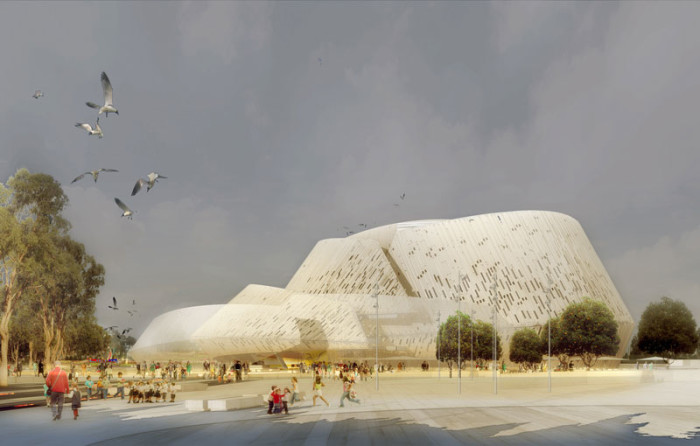
Illustration © Henning Larsen Architects
The architects found inspiration for the design in the unique Damask rose. The delicate structure of the building representing the rose petals was used as a light a filter to create a “playful and dazzling scenography of light into the interior spaces”.
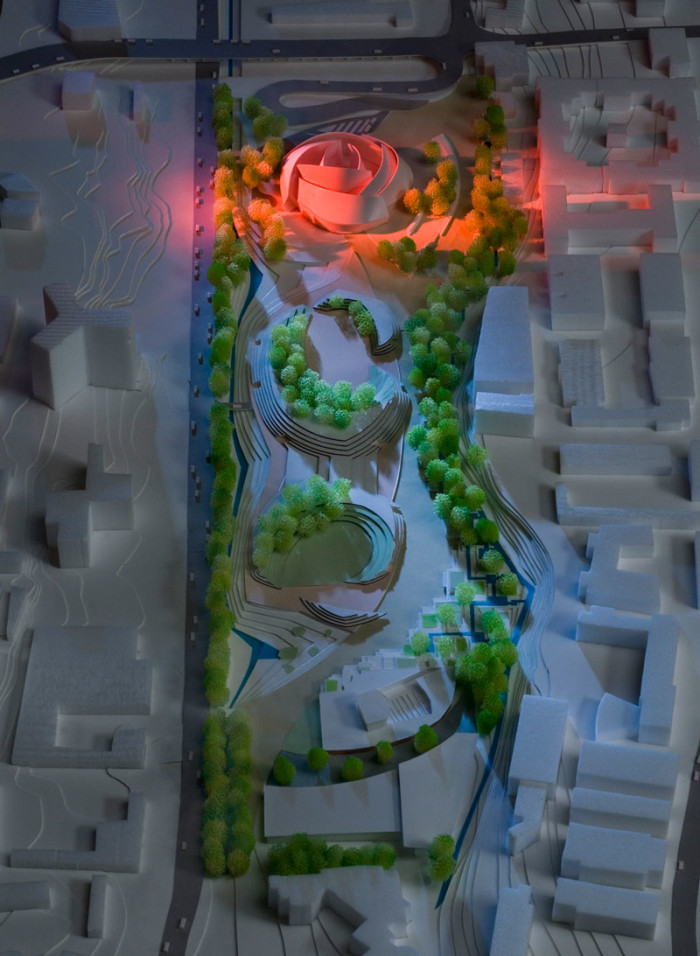
Illustration © Henning Larsen Architects
The exhibition and administrative areas are located between the rose petals creating an interior labyrinth inspired by the old city of Damascus.
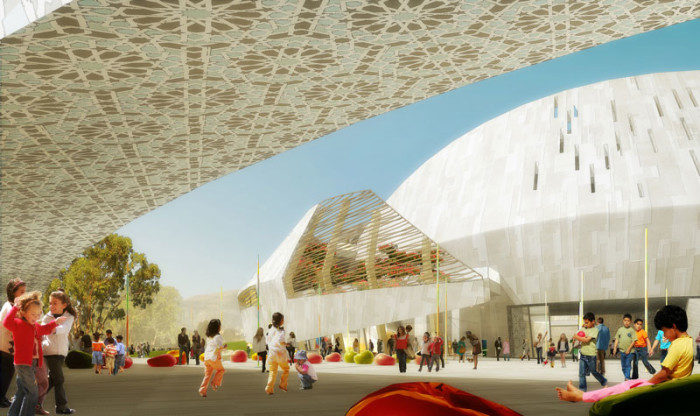
Illustration © Henning Larsen Architects
The communal oriental space is located in the centre of the rose, connected to the upper shell structure through a web of ramps and steps.
This is where people meet, share knowledge and develop new ideas together – a cross pollination of knowledge.
– Henning Larsen Architects

Illustration © Henning Larsen Architects
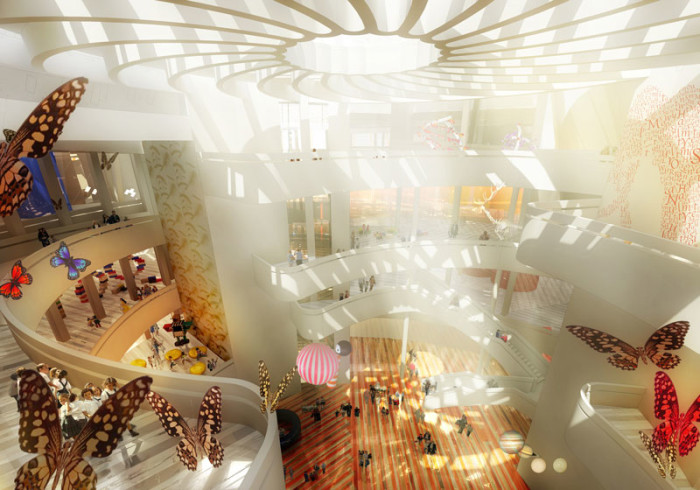
Illustration © Henning Larsen Architects
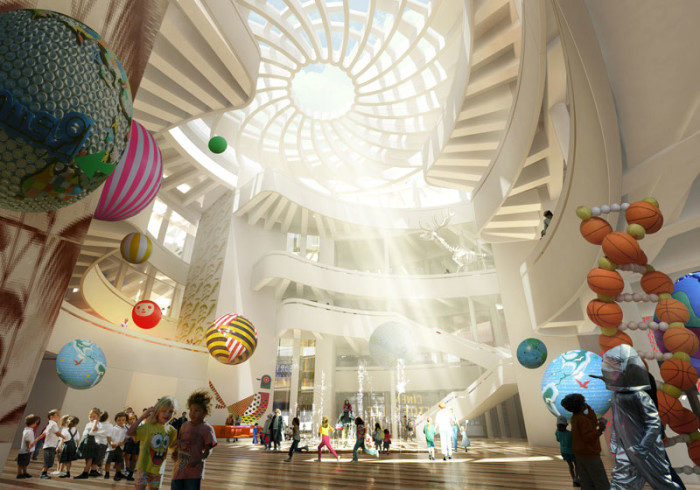
Illustration © Henning Larsen Architects
The architects managed to design a building that draws inspiration from nature and its surrounding context, with focus on environmental impact. The Massar centre is described by Henry Larsen Architects as a “low energy building using local materials, skills and resources”.
Each aspect of the building was designed with energy consumption in mind. The rose shape of the building helps to reduce the energy loads by keeping the sun out. The materials proposed help to significantly reduce energy consumption during both cold and hot climate.
By harnessing and storing solar gain in the winter the amount of heating can be reduced. By shading in summer, cooling loads can be reduced.
The building recycles all the necessary water in house, having the pump system and water heating driven by solar energy. The heating of the building is achieved through a geothermal heat system.

Drawing © Henning Larsen Architects

Drawing © Henning Larsen Architects
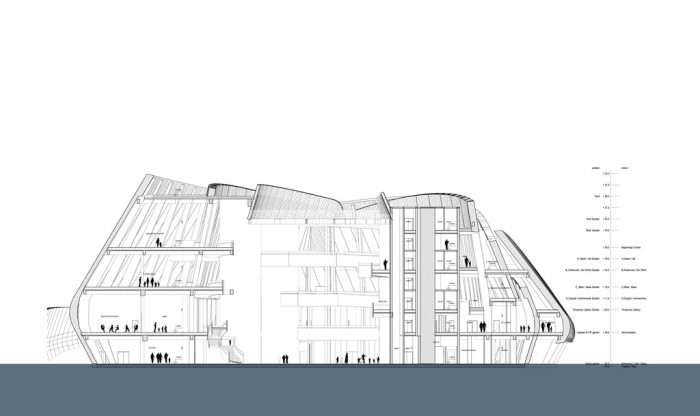
Drawing © Henning Larsen Architects
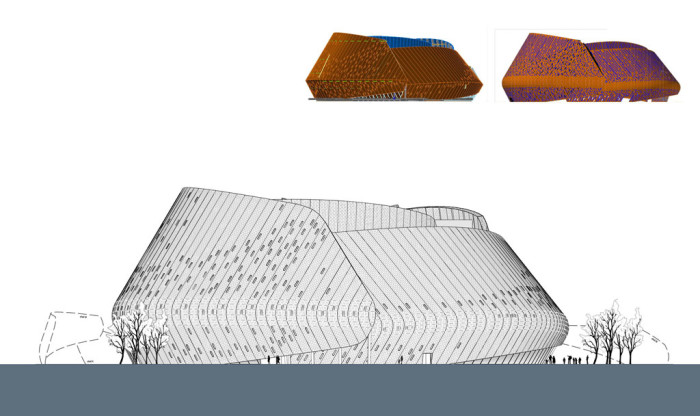
Drawing © Henning Larsen Architects
Facts
Architects: Henning Larsen Architects
Location: Damascus, Syria
Client: Syria Trust for Development
Gross Floor Area: 16,000 m2
Year of Construction: 2008-2013
Landscape Architects: Martha Schwartz Partners
Type of assignment: First prize in competition
*All illustrations and information courtesy of Henning Larsen Architects.
